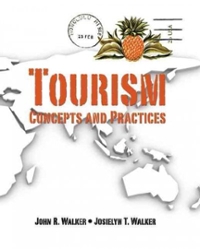Question
Learning Activity: Creating an Activity List, Estimating Durations, and Example of a Work Breakdown Structure (WBS) Objective: The objective of this learning activity is to
Learning Activity: Creating an Activity List, Estimating Durations, and Example of a Work Breakdown Structure (WBS)
Objective: The objective of this learning activity is to understand the process of creating an Activity List based on the Work Breakdown Structure (WBS), estimating the duration for each activity, and providing an example of a WBS.
Introduction (10 minutes):
- Provide an overview of the importance of creating an Activity List and estimating durations in project management.
- Explain the relationship between the WBS and the Activity List.
- Highlight the significance of accurate activity duration estimation for project planning and scheduling.
- Introduce the concept of a Work Breakdown Structure (WBS) and its role in project management.
Example of a Work Breakdown Structure (WBS) (10 minutes):
- Display or distribute an example WBS.
- Explain the purpose of a WBS and its hierarchical structure.
- Highlight how a WBS breaks down a project into manageable work packages and sub-packages.
- Discuss how the WBS provides a visual representation of project scope and deliverables.
- Allow time for questions and clarification on the WBS example.
Activity Identification (20 minutes):
- Instruct the participants to imagine they are working on a project described by the example WBS or provide them with a hypothetical project scenario.
- Ask them to review each work package in the WBS or project scenario.
- Brainstorm and identify one or more activities that need to be completed to accomplish each work package.
- Encourage participants to think in detail and break down the work into manageable activities.
- Allow time for discussion and clarification of any questions.
Creating the Activity List (25 minutes):
- Provide participants with pen/pencil and paper or a computer with a spreadsheet program.
- Instruct them to create a table or spreadsheet with columns for Activity ID, Activity Description, and Duration.
- Ask participants to fill in the table/spreadsheet with the activities they identified for each work package.
- Remind them to assign a unique Activity ID for each activity.
Estimating Activity Durations (30 minutes):
- Explain the concept of activity duration estimation and its impact on project timelines.
- Discuss different techniques for estimating activity durations (e.g., expert judgment, historical data, analogous estimation, etc.).
- Instruct participants to estimate the duration for each activity in their Activity List.
- Encourage them to consider factors such as complexity, resources required, dependencies, and any known constraints.
- Optionally, participants can use a stopwatch or timer to simulate time measurement for more accurate estimations.
Activity Duration Review and Discussion (15 minutes):
- Facilitate a group discussion to review and compare the estimated durations for different activities.
- Encourage participants to share their thought processes and reasoning behind their duration estimations.
- Discuss any variations in estimations and their potential impact on the overall project timeline.
- Provide feedback and guidance on improving the accuracy of activity duration estimation.
Conclusion (5 minutes):
- Summarize the key points covered during the learning activity.
- Reinforce the importance of creating an Activity List, accurately estimating activity durations, and using a WBS for effective project management.
- Answer any remaining questions and address any concerns from the participants.
Step by Step Solution
There are 3 Steps involved in it
Step: 1

Get Instant Access to Expert-Tailored Solutions
See step-by-step solutions with expert insights and AI powered tools for academic success
Step: 2

Step: 3

Ace Your Homework with AI
Get the answers you need in no time with our AI-driven, step-by-step assistance
Get Started


